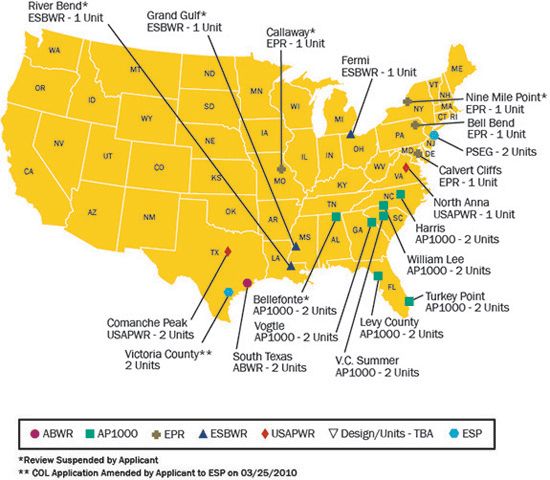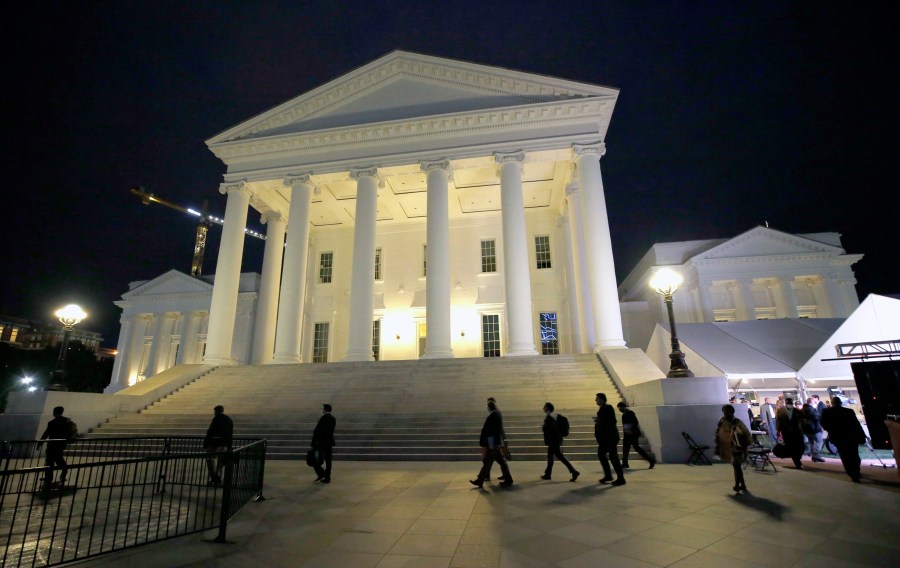Reactor Power Uprate: A Guide To The NRC Approval Process

Table of Contents
Understanding the Benefits of Reactor Power Uprate
A reactor power uprate presents numerous advantages for nuclear power plants, impacting both their financial performance and operational capabilities. Let's explore the key benefits:
Increased Energy Production
Boosting a reactor's power output directly translates to increased revenue. This is because:
- Increased electricity generation capacity leads to higher revenue streams: More power means more electricity sold, leading to a substantial increase in profit margins.
- Reduced reliance on other, potentially less sustainable, energy sources: By maximizing output from existing nuclear facilities, power uprates reduce the need to supplement generation with less environmentally friendly alternatives.
- Improved return on investment for the power plant: The increased energy production directly improves the return on the initial investment made in the plant, making it a more economically viable asset.
Enhanced Operational Efficiency
Reactor power uprates can significantly improve a plant's overall efficiency. This is achieved through:
- Optimized use of existing resources (personnel, equipment): Generating more power from the same infrastructure means better utilization of existing resources, leading to cost savings.
- Potential for reduced operational costs per unit of energy produced: The economies of scale associated with power uprates can lead to lower production costs per kilowatt-hour.
- Improved overall plant capacity factor: A higher capacity factor signifies a more consistently operating plant, maximizing its productive lifespan and minimizing downtime.
Meeting Growing Energy Demands
In a world with rising energy consumption, reactor power uprates play a crucial role in:
- Addressing regional energy shortages and supporting grid stability: Increased power output helps meet growing energy demands and ensures a more stable and reliable energy grid.
- Contributing to a more reliable and resilient energy infrastructure: Upgrading existing plants strengthens the energy infrastructure, reducing vulnerability to disruptions.
- Supporting sustainable energy growth and reducing reliance on fossil fuels: Nuclear power is a low-carbon energy source, and uprates contribute to a cleaner energy mix.
The NRC Approval Process: A Step-by-Step Guide
The NRC approval process for a reactor power uprate is rigorous and demanding, requiring meticulous planning and execution. Let's outline the key steps:
Preliminary Safety Analysis Report (PSAR)
The PSAR is the cornerstone of the application. It must:
- Provide a comprehensive review of the proposed power uprate and its impact on safety systems: This involves a detailed analysis of all safety-related systems and their ability to function effectively at the increased power level.
- Include a detailed analysis of potential risks and mitigation strategies: Identifying and addressing potential hazards is crucial for demonstrating the safety of the uprate.
- Demonstrate compliance with all relevant NRC regulations: The PSAR must show that the uprate complies with all existing safety regulations and guidelines.
Environmental Impact Statement (EIS)
The EIS addresses the environmental implications of the power uprate. It must:
- Provide an assessment of the environmental impact of the power uprate: This includes evaluating the potential effects on air and water quality, wildlife, and other environmental factors.
- Identify potential environmental consequences and mitigation measures: The EIS must outline strategies for minimizing negative environmental impacts.
- Ensure compliance with the National Environmental Policy Act (NEPA): The EIS must meet all the requirements of NEPA, a crucial piece of environmental legislation.
NRC Review and Public Comment Period
Following submission, the application undergoes a thorough NRC review:
- Thorough review of submitted documentation by NRC staff: NRC experts will meticulously examine all aspects of the application.
- Public comment period allowing stakeholders to provide input: This period allows the public to review the application and submit comments.
- Potential for public hearings and additional information requests: The NRC may hold public hearings and request additional information during the review process.
License Amendment and Implementation
The final steps involve:
- Issuance of a license amendment allowing the power uprate: Upon successful completion of the review, the NRC will issue a license amendment authorizing the power increase.
- Implementation of necessary modifications and upgrades: This includes making the required physical modifications to the plant to support the higher power level.
- Verification and validation of system performance at the increased power level: Post-implementation testing confirms that the plant operates safely and effectively at the new power level.
Key Considerations for a Successful Reactor Power Uprate
Achieving a successful reactor power uprate requires careful attention to several crucial factors:
Experienced Engineering and Regulatory Expertise
Having the right team is paramount:
- Expert knowledge of nuclear power plant operations and NRC regulations: Deep understanding of both operational aspects and regulatory compliance is essential.
- Proven track record of successful power uprate projects: Experience in navigating the complex NRC approval process is invaluable.
- Effective communication and collaboration with NRC staff: Maintaining open communication with the NRC throughout the process is key to a smooth and efficient approval.
Thorough Planning and Preparation
Meticulous planning minimizes risks and delays:
- Detailed project schedule with clear milestones and timelines: A well-defined schedule ensures the project stays on track.
- Comprehensive budget and resource allocation: Accurate budgeting and resource management are essential for cost control.
- Risk management plan to address potential challenges: Identifying and mitigating potential risks is critical for project success.
Maintaining Regulatory Compliance Throughout the Process
Continuous compliance is non-negotiable:
- Adherence to all applicable NRC regulations and guidelines: Maintaining strict compliance throughout the process is crucial.
- Proactive identification and resolution of any compliance issues: Addressing any issues promptly prevents delays and potential setbacks.
- Maintenance of accurate and complete documentation: Thorough documentation is essential for demonstrating compliance and supporting the application.
Conclusion
Successfully navigating the Reactor Power Uprate process and obtaining NRC approval requires meticulous planning, comprehensive documentation, and adherence to rigorous regulatory standards. By understanding the benefits, thoroughly preparing for the NRC review, and engaging experienced professionals, nuclear power plant operators can effectively increase their energy production capacity, enhance operational efficiency, and meet growing energy demands. Don't hesitate to contact us to discuss your reactor power uprate needs and learn how we can assist you in achieving a successful outcome. We offer expert guidance on every aspect of the reactor power uprate process, from initial planning to final license amendment.

Featured Posts
-
 Fortnite Chapter 6 Season 2 Pre Load Battle Pass Skins And Release Date Details
May 02, 2025
Fortnite Chapter 6 Season 2 Pre Load Battle Pass Skins And Release Date Details
May 02, 2025 -
 Mental Health Awareness Understanding The Silence And Finding Support Featuring Dr Shradha Malik
May 02, 2025
Mental Health Awareness Understanding The Silence And Finding Support Featuring Dr Shradha Malik
May 02, 2025 -
 Decoding Ap Decision Notes The Minnesota Special House Race Explained
May 02, 2025
Decoding Ap Decision Notes The Minnesota Special House Race Explained
May 02, 2025 -
 Should You Invest In Xrp Ripple While Its Under 3
May 02, 2025
Should You Invest In Xrp Ripple While Its Under 3
May 02, 2025 -
 Indonesia Turkiye Perkuat Kerja Sama Hasil Pertemuan Presiden Erdogan
May 02, 2025
Indonesia Turkiye Perkuat Kerja Sama Hasil Pertemuan Presiden Erdogan
May 02, 2025
Latest Posts
-
 Benson Boone On Comparisons To Harry Styles A Direct Response
May 10, 2025
Benson Boone On Comparisons To Harry Styles A Direct Response
May 10, 2025 -
 Benson Boone Responds To Harry Styles Copying Accusations
May 10, 2025
Benson Boone Responds To Harry Styles Copying Accusations
May 10, 2025 -
 How Harry Styles Reacted To A Hilariously Bad Snl Impression
May 10, 2025
How Harry Styles Reacted To A Hilariously Bad Snl Impression
May 10, 2025 -
 Harry Styles On That Awful Snl Impression His Honest Response
May 10, 2025
Harry Styles On That Awful Snl Impression His Honest Response
May 10, 2025 -
 Harry Styles Snl Impression The Reaction That Broke The Internet
May 10, 2025
Harry Styles Snl Impression The Reaction That Broke The Internet
May 10, 2025
